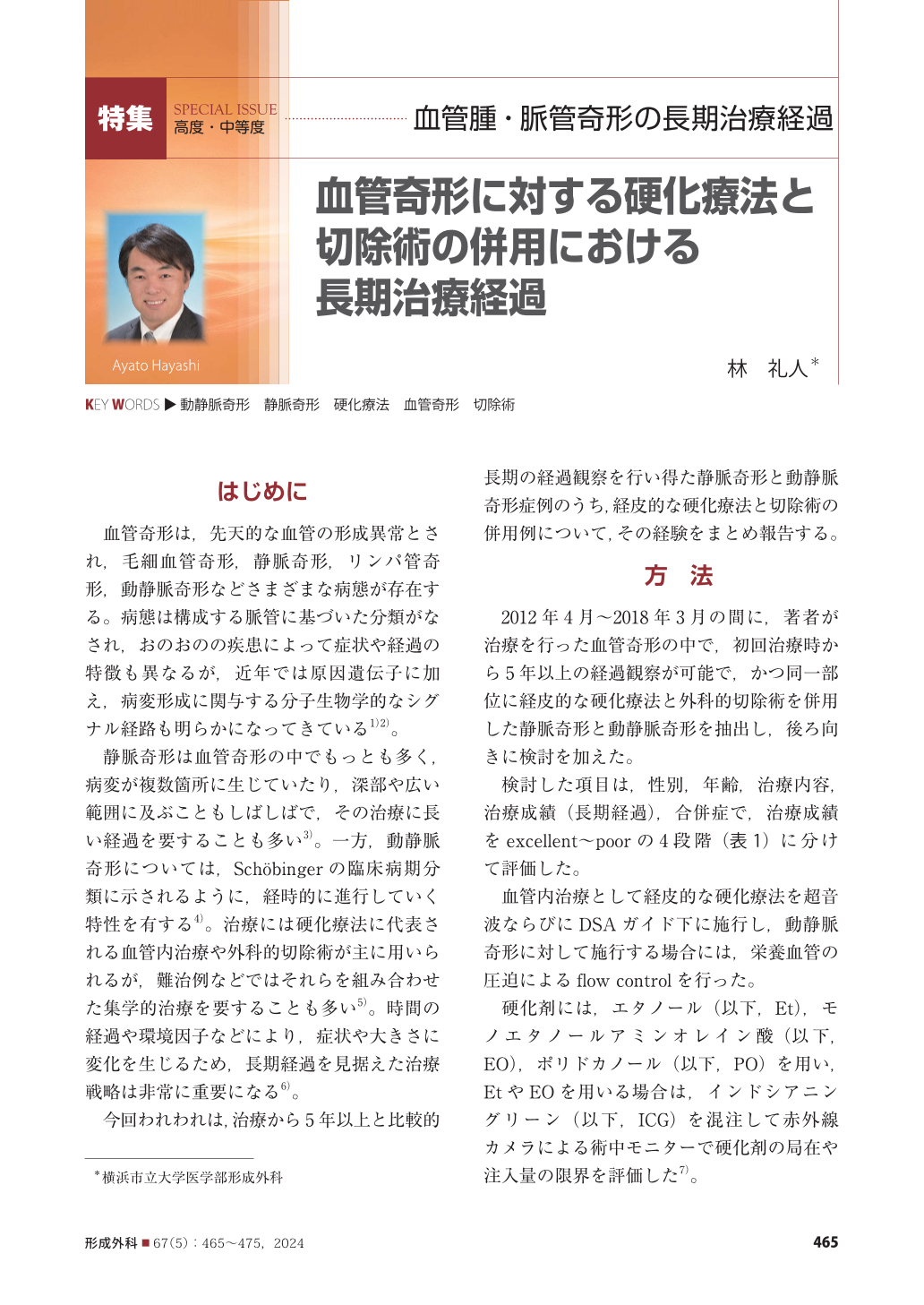Japanese
English
- 有料閲覧
- Abstract 文献概要
- 1ページ目 Look Inside
- 参考文献 Reference
はじめに
血管奇形は,先天的な血管の形成異常とされ,毛細血管奇形,静脈奇形,リンパ管奇形,動静脈奇形などさまざまな病態が存在する。病態は構成する脈管に基づいた分類がなされ,おのおのの疾患によって症状や経過の特徴も異なるが,近年では原因遺伝子に加え,病変形成に関与する分子生物学的なシグナル経路も明らかになってきている 1)2)。
静脈奇形は血管奇形の中でもっとも多く,病変が複数箇所に生じていたり,深部や広い範囲に及ぶこともしばしばで,その治療に長い経過を要することも多い 3)。一方,動静脈奇形については,Schöbingerの臨床病期分類に示されるように,経時的に進行していく特性を有する 4)。治療には硬化療法に代表される血管内治療や外科的切除術が主に用いられるが,難治例などではそれらを組み合わせた集学的治療を要することも多い 5)。時間の経過や環境因子などにより,症状や大きさに変化を生じるため,長期経過を見据えた治療戦略は非常に重要になる 6)。
今回われわれは,治療から5年以上と比較的長期の経過観察を行い得た静脈奇形と動静脈奇形症例のうち,経皮的な硬化療法と切除術の併用例について,その経験をまとめ報告する。
Vascular malformations, which change in symptoms and size over time due to factors like aging and environmental influences, require long-term treatment strategies. Treatment commonly involves endovascular therapy, such as sclerotherapy, and surgical resection; that is, it often requires a multidisciplinary approach.
In this study, we report on our cases (n=12), which we followed up for more than five years after treatment with both sclerotherapy and surgical resection.
Sclerotherapy was performed percutaneously and with adequate flow control in arteriovenous malformations (AVMs). Surgical resection was based on the premise of controlling the lesion to a certain extent with sclerotherapy, aiming for the improvement of residual deformities or radical removal of the lesion. Venous malformations (VMs) typically required fewer sclerotherapy sessions than AVMs, with a strategic choice of sclerosants reflecting a balance between efficacy and the risk of complications such as skin necrosis, which would indicate a need for more aggressive treatment in AVM.
Surgical strategies varied, with AVM patients often undergoing staged resections, in contrast to VM patients, whose treatments were sometimes simultaneous. Despite this, VMs showed no recurrence post-primary resection, while AVMs showed recurrences in some cases, indicating different treatment response dynamics.
The potential for integrating pharmacotherapy with molecular targeted drugs into treatment protocols indicates an evolving landscape for managing vascular malformations, underscoring the importance of developing new and effective multidisciplinary treatments in the quest for positive long-term outcomes.

Copyright© 2024 KOKUSEIDO CO., LTD. All Rights Reserved.


